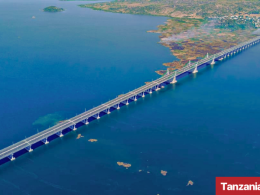The Tanzania aviation sector has begun to welcome flights from the Nairobi-based airline, Fly-540, at the Kilimanjaro International Airport (KIA).
Fly-540, which is a new airline that was established only two years ago, already covers much of Kenya and is currently focused on spreading its network in order to reach the whole of Tanzania as well as East and Central Africa.
Currently, Fly-540 operates a fleet of seven ATR passenger carriers that were manufactured in France in addition to a Fokker Friendship F27 cargo plane.
The recent maiden flight of Fly-540 from Jomo Kenyatta International Airport (JKIA) to KIA was completed using an ATR 42 aircraft.
The airline also has plans of adding two larger aircrafts, possibly Boeing, to its fleet at some point this year.
“Soon we will also become a local airline in Tanzania,” said Jackie Arkle-Okutoi the East African Marketing Manager for 540 Aviation Limited, “because we have already registered the 540 Tanzania Limited, which has been granted air service license.”
According to Brown Francis, the Fly-540 regional manager, his company is very eager to begin operations in Tanzania.
“Tanzania has the highest number of well-developed airports in East Africa,” said Mr. Francis, “and we intend to make good use of them.”
Currently, the Kenya-based air carrier is offering the cheapest fares, charging only USD 99 for a one way flight from KIA to Nairobi, which is at least 50 per cent less than other airlines that operate the same route.
According to Nickson Ooko, the company’s co-founder as well as Operations Director, the airline is able to reduce its fares by also reducing the availability of some services.
In doing so, the carrier is able to cut its costs by at least USD 50 and is, therefore, able to pass the savings along to its customers with reduced flight prices.
“We can manage to keep our fares low by doing away with unnecessary in-flight add-ons such as AV entertainment” explained Mr. Ooko, “The journey between Kilimanjaro and Nairobi is less than an hour [and because] nobody would need a movie, music, pillows or blankets during such a short duration, we took away those things.”
In addition, Mr. Ooko went on to explain that his carrier’s fuel-efficient planes help to reduce operating costs even further.
“You see, about 70 percent of airlines’ operating expenditures is invested in fueling the aircrafts,” said Mr. Ooko.
According to a report from the Arusha Times, Mr. Ooko went on to indicate that his carrier has taken steps in order to make flying more accessible to the average traveler, rather than simply a luxury that is afforded only by the rich.









